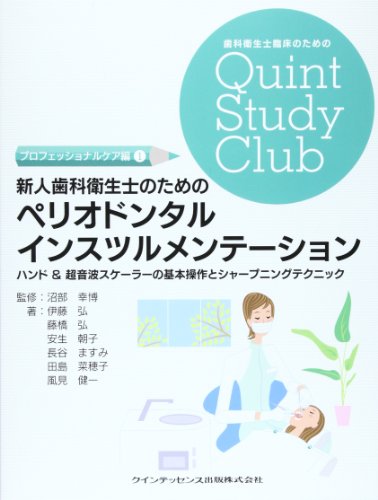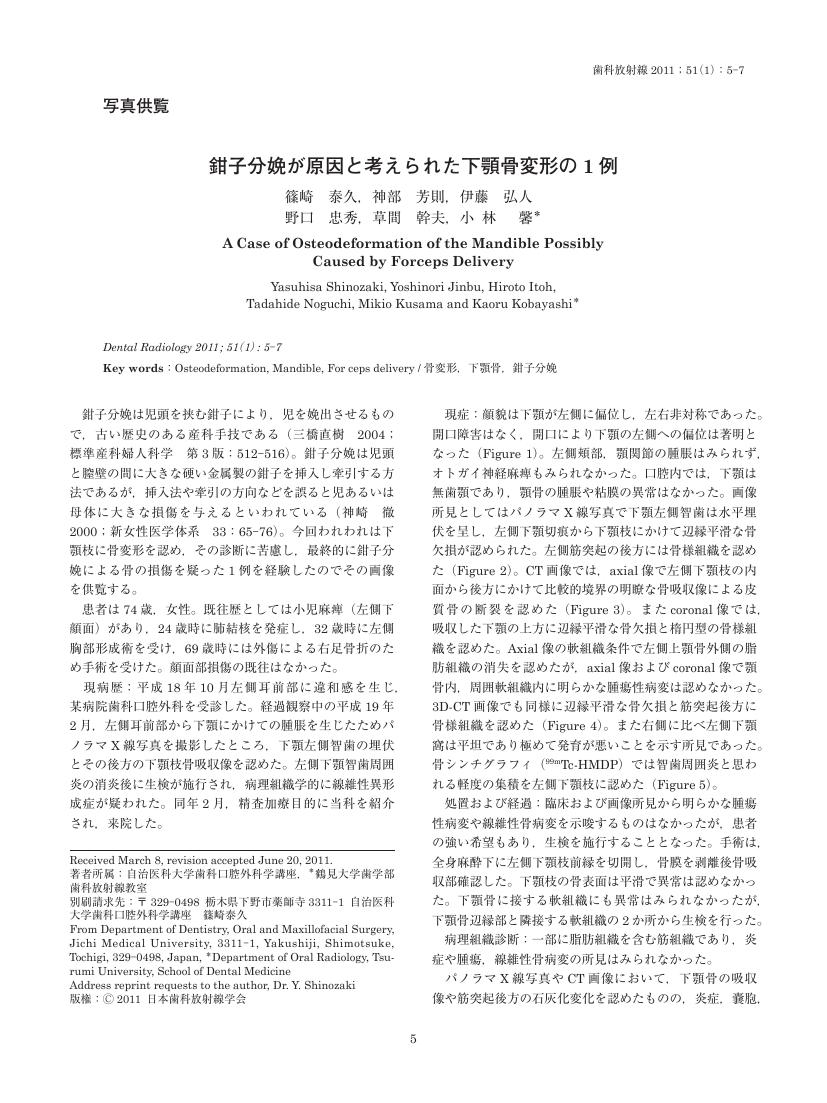1 0 0 0 IR 〈原著論文〉世界遺産登録における吉野の評価に関する研究
- 著者
- 渡邉 真菜美 伊藤 弘
- 出版者
- 筑波大学大学院人間総合科学研究科世界遺産専攻・世界文化遺産学専攻
- 雑誌
- 世界遺産学研究 (ISSN:21894728)
- 巻号頁・発行日
- vol.4, pp.18-31, 2017-08
本研究は、奈良県・吉野を事例に、国史、山岳信仰、桜の鑑賞、林業など地域の多様で複雑な背景に対する世界遺産登録の評価を分析し、国際的な評価と地域の実態との乖離を検証することを試みた。地形図やGISに基づく景観の成立過程の把握、および世界遺産登録に関係する国内外の公式資料の調査を行った。吉野の森林は林業によって形成され、修験道の山岳修行の道である大峯奥駈道周辺は、戦後の森林施業で人工のスギ林に囲まれた空間へと変化してきた。しかし、世界遺産登録において、UNESCOやICOMOSでは吉野の森林が高く評価され、その神聖性が強調されていた。地域の多様な背景のうち一部が注目され、かつ、人の営みで成立してきたという実態とは異なる理解がなされていたことが明らかとなった。Seeking to protect international and universal values, the World Heritage highlights specific aspect of diverse and complicated backgrounds of a local place. Assessing what aspect was valued and what was not at the World Heritage inscription is important in understanding a local place as a whole. Yoshino as part of the World Heritage site "The Sacred Sites and Pilgrimage Routes of the Kii Mountain Range" involves associations with national history, a history of mountain ascetic belief, an appreciation as a scenic cherry blossom site, and traditional forestry activities unique in this region. This research analyses evaluations on the diverse backgrounds of Yoshino made at the World Heritage inscription, to figure out the discrepancy between the international and the local. It utilized topographical maps and GIS data to identify spatial transitions of a landscape of Yoshino. It then reviewed documents related to the World Heritage inscription from UNESCO, ICOMOS and the Japanese Government to see which aspect was highly valued. Spatial analysis discovered that a landscape around O-mine Oku-gake Michi, a training path across mountains for the ascetic religion, has changed over the 20t h century. Views from the path previously included a wide view to distant mountains but due to development of forestry activities, now they are entirely enclosed surrounded by planted cedar forests. On the other hand, evaluations by UNESCO and ICOMOS featured the ascetic belief and particularly emphasized sacredness of forests. While not recognizing the fact that the forest in Yoshino is mostly an artificial plantation developed over time due to the human intervention, the World Heritage inscription associated the forests with religious ascetic practices. This revealed a discrepancy between an international understanding on a local area and the local reality, which the international focused on one specific aspect of local diversities and failed to grasp exact background of the highlighted aspect.
- 著者
- 伊藤 弘大 大倉 典子
- 出版者
- 電子情報通信学会
- 雑誌
- 電子情報通信学会技術研究報告 = IEICE technical report : 信学技報 (ISSN:09135685)
- 巻号頁・発行日
- vol.117, no.30, pp.173-175, 2017-05-16
- 著者
- 山本 建太 伊藤 弘樹 菊池 司
- 出版者
- 一般社団法人 映像情報メディア学会
- 雑誌
- 映像情報メディア学会技術報告
- 巻号頁・発行日
- vol.38, pp.211-213, 2014
現在では、大きな建物やライブの演出などにプロジェクションマッピングを用いているのが主流であるが、それをあえて小型化することによって、プロジェクションマッピングをより身近に体験できるツールとして、本研究では、プロジェクションマッピングとアミッドスクリーンの後ろが透けて見える特性を生かした、今までにない宣伝ツールを提案する
1 0 0 0 多変量解析とラフ集合を用いた携帯音響製品のデザイン評価構造分析
- 著者
- 関口 彰 嶋 暁人 井上 勝雄 伊藤 弘樹
- 出版者
- 日本デザイン学会
- 雑誌
- デザイン学研究 (ISSN:09108173)
- 巻号頁・発行日
- vol.54, no.1, pp.49-58, 2007
- 参考文献数
- 12
- 被引用文献数
- 4
今日の携帯音響機器のデザイン評価構造を明らかにするために、市販ポータブルMD製品を対象に調査分析を行い、その評価構造を定量的に求めた。具体的には、人間の評価における上位の態度からイメージを経由する認知までの階層構造において、上位の態度から中位のイメージへの関係分析を重回帰分析で行い、態度に強く寄与する3つのイメージを抽出した。中位のイメージから下位の認知部位への関係分析をラフ集合と決定ルール分析法で行った。評価用語(態度とイメージ、認知部位)の抽出には評価グリッド法を用いた。これら得られた態度と各イメージに対して、5段階SD尺度で29種製品サンプルを評価した。このラフ集合の計算過程において、決定クラスの絞込み方法についての新提案も行った。これらの分析により、デザイン評価構造が定量的に求められた。さらに、現場デザイナーによる確認実験とデザイン案の再評価の結果、この評価構造の設計知識としての有効性と改良点についても確認した。
1 0 0 0 玉川上水緑道にみる緑地と住民との関わりの変遷
- 著者
- 山下 結 伊藤 弘 小野 良平 下村 彰男
- 出版者
- Japanese Institute of Landscape Architecture
- 雑誌
- ランドスケープ研究 (ISSN:13408984)
- 巻号頁・発行日
- vol.75, no.5, pp.677-682, 2012
- 被引用文献数
- 2
This study aims to clarify the changes of the relationship between green spaces and residents on Tamagawa Josui Green Way and to get hints on green preservation method. Changes of the relationship are considered by Policy changes, place changes and residents' consciousness changes. As the result of the study, from Edo era to 1950, Green Way was not intimate and was only visited for seeing cherry blossoms because Tamagawa Josui is at the edge of the villages. From 1950 to 1970, new community was created around Green Way through urban expansion. Green Way was very appreciated as a natural spot with images of Musashino by the immigrants. From 1970 to 1990, Green Way lost natural charm by artificial park construction and Tamagawa Josui drain. Residents started preservation activities. Since 1990, the image of Musashino with copses and canals revived on Green Way. In recent years cafes and concert houses appear along Green Way. Residents are enjoying Green Way in their daily life by designing their gardens or houses to melt into Green Way. As a result, it is suggested that the Tamagawa Josui scenic zone using the image of Musahino kept Green Way. When green space connects surround, residents tend to appreciate green spaces and to have daily relationship with green spaces.
- 著者
- 伊藤 弘了
- 出版者
- 京都大学大学院人間・環境学研究科共生人間学専攻
- 雑誌
- 人間・環境学 (ISSN:09182829)
- 巻号頁・発行日
- vol.25, pp.31-44, 2016-12-20
本論文では是枝裕和の映画作品における入浴の役割を論じていく.第1節では, 是枝のフィルモグラフィを辿りながら, 入浴場面が「他者との親密な関係性を構築する場」として機能している点を確認する.入浴のこの機能は, しばしば「血縁によらない家族関係」という是枝作品の主要なテーマと結びつく.登場人物たちは風呂の水を共有することで家族になっていくのである(『幻の光』[1995年], 『誰も知らない』[2004年], 『花よりもなほ』[2006年], 『歩いても歩いても』[2008年]), その裏返しとして, 他者と水を共有しない入浴(一人きりの入浴)は, その人物の孤独をあらわすことになる(『ワンダフルライフ』[1998年], 『歩いても歩いても』, 『そして父になる』[2013年], 『海街diary』[2015年], 『海よりもまだ深く』[2016年]).第1節の議論を踏まえて, 弟2節では『DISTANCE』(2001年) に入浴場面が完全に欠けている意味について考察する.この作品では, 他者との関係性の不全が描かれており.入浴の欠如はこのテーマを体現しているのである, 水の主題系に彩られた本作では, 他者と関係を深めるための装置として, 入浴の代わりにプールが用いられることになる. This paper sheds light on the function of taking baths in Hirokazu Kore-eda's films. Section 1 demonstrates that throughout his filmography, bathing creates intimate relationships between characters. The function of baths is linked with the theme of families without blood relationships, one of the most important subject themes of Kore-eda's works. His characters create families by taking baths together (Alaborasi 1995 ; Nobody Knows 2004 ; Hone 2006 ; Still Walking 2008). Contrarily, taking a bath alone represents the solitudes of the character (After Life 1999 ; Still Walking ; Like Father, Like Son 2013 ; Our Little Sister 2015 ; After the Storm 2016). Based on this argument, section 2 examines Distance (2001). This film completely lacks a bath scene. It depicts the disorder of intimate relationships, and the lack of bath scenes embodies this theme. Yet, Distance substitutes the scene of swimming pools with the bath scenes and thereby articulates the relationship between water and intimacy as other Kore-eda films do.
1 0 0 0 OA 日本医療・病院管理学会誌における学術用語の動向
- 著者
- 千葉 宏毅 伊藤 道哉 池崎 澄江 伊藤 弘人 日本医療 ・ 病院管理学会 学術情報委員会
- 出版者
- 一般社団法人 日本医療・病院管理学会
- 雑誌
- 日本医療・病院管理学会誌 (ISSN:1882594X)
- 巻号頁・発行日
- vol.53, no.4, pp.227-237, 2016 (Released:2016-12-10)
- 参考文献数
- 13
目的:日本医療・病院管理学会の学術用語選定の基礎資料とするために,過去10年間に用いられた学術的用語と付帯情報を客観的に分析し,傾向を把握することが本研究の目的である。方法:学会誌で2005年1月から2014年12月に公開された学術用語を計量テキスト分析し,種別,年別に用語の出現数を比較した。またクラスター化によって得た用語のグループ(分野)を多重対応分析した。結果:看護,システム,管理の3語は,複数の指定順にまたがる中心的なキーワードであった。2010-14年ではDPCやレセプトのビッグデータの活用,在宅医療や訪問看護,分析に基づく経営,外国人の受療対応に関連する用語が2005-09年より多く出現する傾向があった。考察:種別および年別によって使用される学術用語の変化や特徴は,わが国の情勢にも関連すると推測できることから,新たな用語選定や分類,解説の必要性を示唆するものである。
- 著者
- 松田 彰 伊藤 弘子 竹貫 健二 佐々木 琢磨 上田 亨
- 出版者
- 公益社団法人日本薬学会
- 雑誌
- Chem. Pharm. Bull. (ISSN:00092363)
- 巻号頁・発行日
- vol.36, pp.945-953, 1988
- 被引用文献数
- 1
The reaction of 4-ethoxy-1-(3,5-O-tetraisopropyldisiloxanyl-1,3-diyl-β-D-erythro-pentofuran-2-ulosyl)-2(1H)-pyrimidinone (11) with various organometallic reagents yielded corresponding 2'-branched-chain sugar pyrimidine nucleosides. Only in the reactions with MeMgBr and EtMgBr was the more hindered β-attack observed to afford and 2'-alkyl ribofuranosides (13a, b). In the reaction of 11 with MeLi, Me_3,Al, or PhMgBr, 2'-methyl or phenyl arabinosides (12a, b, c)were obtained stereoselectively. Conversion of these pyrimidine nucleosides into cytosine derivatives is also described and their antileukemic and antiviral activities are discussed.
- 著者
- 小松 正夫 太田 真 熊本 均 伊藤 弘人
- 出版者
- 公益社団法人 日本マリンエンジニアリング学会
- 雑誌
- マリンエンジニアリング (ISSN:13461427)
- 巻号頁・発行日
- vol.50, no.1, pp.20-23, 2015-01-01 (Released:2016-01-27)
- 参考文献数
- 11
- 著者
- 松田 彰 伊藤 弘子 竹貫 健二 佐々木 琢磨 上田 亨
- 出版者
- The Pharmaceutical Society of Japan
- 雑誌
- Chemical and Pharmaceutical Bulletin (ISSN:00092363)
- 巻号頁・発行日
- vol.36, no.3, pp.945-953, 1988-03-25 (Released:2008-03-31)
- 参考文献数
- 21
- 被引用文献数
- 32 55
The reaction of 4-ethoxy-1-(3, 5-O-tetraisopropyldisiloxanyl-1, 3-diyl-β-D-erythro-pentofuran-2-ulosyl)-2(1H)-pyrimidinone (11) with various organometallic reagents yielded corresponding 2'-branched-chain sugar pyrimidine nucleosides. Only in the reactions with MeMgBr and EtMgBr was the more hindered β-attack observed to afford and 2'-alkyl ribofuranosides (13a, b). In the reaction of 11 with MeLi, Me3, Al, or PhMgBr, 2'-methyl or phenyl arabinosides (12a, b, c)were obtained stereoselectively. Conversion of these pyrimidine nucleosides into cytosine derivatives is also described and their antileukemic and antiviral activities are discussed.
- 著者
- 伊藤 弘
- 出版者
- デンタルダイヤモンド社
- 雑誌
- ディーエイチスタイル (ISSN:18813437)
- 巻号頁・発行日
- vol.2, no.2, pp.34-38, 2008-02
1 0 0 0 OA iPS細胞樹立過程には組織ごとの特異的ルートがあるのか
- 著者
- 伊藤弘 [ほか] 著
- 出版者
- クインテッセンス出版
- 巻号頁・発行日
- 2008
1 0 0 0 首都高速道路高架下を活用した公園の利用特性
- 著者
- 國村 周平 伊藤 弘 小野 良平 下村 彰男
- 出版者
- 日本造園学会
- 雑誌
- ランドスケープ研究 (ISSN:13408984)
- 巻号頁・発行日
- vol.72, no.5, pp.845-848, 2009
- 被引用文献数
- 3
道路の高架下空間は従来その管理上の観点から、原則として、広場、公園、駐車場などの公共性の高い利用のみなされており、しかも周辺環境を必ずしも考慮せずに設置されてきたものが少なくない。過密な都市環境の中で高架下は現在においてもその空間の活用が一定度行なわれ、そこには公園や広場も存在する中で、その設置状況や利用の実態については把握されていない。これに関連しては鉄道の高架下に関しての研究があり、都心から15km圏内で盛んに活用され、都心から離れるに従って用途が変化していくことなどが知られている。また、道路では、高架下公園の構造上のタイプ分けに関する研究がある。しかしいずれにしても公園の具体的な利用状況には触れていない。そこで、本研究では調査対象地選定のために首都高高架下への公園等の設置状況を把握した後、地域住民による利用のされかたの特徴を明らかにし、特殊な空間である道路高架下環境とそこでなされる活動の関係を明らかにし、今後高架下の活用を考える際の一助としたい。
1 0 0 0 IR <公開研究会報告>第33回公開研究会報告「大学の評判」 大学と地域
- 著者
- 伊藤 弘昌
- 出版者
- 筑波大学
- 雑誌
- 大学研究 (ISSN:09160264)
- 巻号頁・発行日
- vol.20, pp.87-95, 2000-03
私は、工学系の研究所でエレクトロニクスの研究をしておる者で、私共の元所長が前総長の西澤潤一先生です。大学が今新しいステップに踏み出すことが求められる時に、文部省とか国との関係だけではなく、地域との関係も重要ではないかと思っております。特に私共の大学のように仙台市という中程度 ...
- 著者
- 伊藤 吉紀 莅戸 立夫 ハガード ピーター エリソン ブライアン 伊藤 弘 石橋 忠夫 水野 皓司
- 出版者
- 一般社団法人電子情報通信学会
- 雑誌
- 電子情報通信学会技術研究報告. MW, マイクロ波 (ISSN:09135685)
- 巻号頁・発行日
- vol.102, no.407, pp.71-76, 2002-10-17
ドットマトリクス型単一走行キャリアフォトダイオードをマウントした新型の導波管型フォトミクサを製作し,その特性評価を行った.波長1.55μm帯の二波長混合光をフォトダイオードに照射して高周波電流を誘起することにより,周波数75GHz〜450GHzの短ミリ波の発生を実験的に確認することに成功した.
- 著者
- 仲谷 寛 原 良成 宮里 明子 佐藤 聡 伊藤 弘 小林 博 鴨井 久一 菅谷 彰 杉山 裕一 辻上 弘 田村 利之 堀 俊雄
- 出版者
- 特定非営利活動法人日本歯周病学会
- 雑誌
- 日本歯周病学会会誌 (ISSN:03850110)
- 巻号頁・発行日
- vol.34, no.1, pp.220-231, 1992-03-28
- 被引用文献数
- 14 2
歯周治療におけるTBC-コラーゲン複合骨移植材: KF-300(TBC-コラーゲン合材)の臨床応用について検討した。歯周疾患によって生じた歯槽骨欠損部68名,80部位に対してTBC-コラーゲン複合骨移植材を応用し,経時的にX線写真および臨床的な評価を行った。術前と比較して術後6ヵ月で,X線写真による骨欠損最深部までの距離は3.6mmの改善が認められた。また,プロービング・デブスおよびアタッチメントレベルは,それぞれ3.2mm, 2.1mmの改善が認められた。動揺度,プロービング時の出血は,術後有意の改善が認められた。骨移植材の漏出および創〓開は,術後2週まで認められたが臨床的には問題とならないと思われた。TBC-コラーゲン合材によると考えられる副作用は1症例も認められなかつた。以上の結果より,TBC-コラーゲン複合骨移植材は,生体親和性に優れ,歯周治療における有用な骨移植材であると考えられた。
- 著者
- 平田 恵子 島村 保洋 鈴木 敬子 貞升 友紀 伊藤 弘一
- 出版者
- [日本食品衛生学会]
- 雑誌
- 食品衛生学雑誌 (ISSN:00156426)
- 巻号頁・発行日
- vol.46, no.6, pp.263-269, 2005-12-25
- 参考文献数
- 9
- 被引用文献数
- 3
食品添加物酵素処理ステビアの成分分析法を開発した.分析条件を設定するため,まずグルコアミラーゼを用いて付加糖の加水分解条件を検討したところ,反応温度および時間は55℃,3時間,グルコアミラーゼ量は反応溶液10mL中250 Uが適切な条件であった.C18カートリッジカラムによる固相抽出法で試料から多糖類などの除去を行い,さらに加水分解して得られた配糖体および遊離糖をC18カートリッジカラムで分離し,それぞれの含有量をHPLCにより測定した.本法により,3試料を分析したところ付加糖としてグルコースが検出され,その含有量は25~42% であり,未反応配糖体含有量を除いた配糖体総含有量は35.7~52.5% であった.両含有量を合計した酵素処理ステビア成分含量は77.5~80.4% で,回収率(C18カートリッジカラム処理後の試料量を100としたとき)はすべて85% 以上であった.また,糖量に係数(×0.9)を乗じさらに乾燥物換算して得られた成分含量値は,すべての試料で80.0% 以上であり,日本食品添加物協会の規格値を満たした.
1 0 0 0 OA 鉗子分娩が原因と考えられた下顎骨変形の1例
- 著者
- 篠崎 泰久 神部 芳則 伊藤 弘人 野口 忠秀 草間 幹夫 小林 馨
- 出版者
- 特定非営利活動法人 日本歯科放射線学会
- 雑誌
- 歯科放射線 (ISSN:03899705)
- 巻号頁・発行日
- vol.51, no.1, pp.5-7, 2011 (Released:2011-08-05)
1 0 0 0 OA ヘリクリサムをはじめとしたいくつかの植物の乾膜質な花葉においてみられた二次細胞壁
- 著者
- 伊藤 弘顕 西川 久仁子 粟野 達也 細川 宗孝 矢澤 進
- 出版者
- 一般社団法人 園芸学会
- 雑誌
- 園芸学研究 (ISSN:13472658)
- 巻号頁・発行日
- vol.9, no.1, pp.19-23, 2010 (Released:2010-01-26)
- 参考文献数
- 24
乾膜質な花葉をもつ7種の植物種を用いて,細胞壁の形態を電子顕微鏡および偏光顕微鏡を用いて観察した.通常,花葉は一次細胞壁だけの柔細胞で構成される.しかし,少なくとも7種の植物種における乾膜質な花葉では,共通して組織すべての細胞がセルロース配向のある二次細胞壁を発達させていることが明らかとなった.また,二次細胞壁の肥厚形態は植物種によって様々であった.すなわちヘリクリサムなどキク科の植物は管状要素あるいは転送細胞のように網目状あるいは縞状に,センニチコウなどヒユ科の植物は繊維のように層状に,イソマツ科の植物であるスターチスは種皮の厚壁異型細胞のようにひだ状に,細胞壁を発達させていた.



